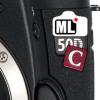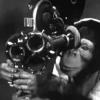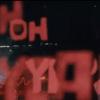Leaderboard
Popular Content
Showing content with the highest reputation on 05/11/2013 in all areas
-
Quick grading test (wetransfer) GH2 original - G6 original - GH2 curve - G6 curve (same curve). GH2 @ 1080p24 65Mbps - Smooth -2-2-2-2 G6 @ 1080p24 24Mbps - Natural -5-2-0-5 ISO 160, same aperture and shutter speed. I'm really impressed. Shadow detail from the G6 is so much nicer, as is the grain. Even in the unedited footage of the hacked GH2 you see some dirty noise in the shadows. With the G6 it's a fine grain.2 points
-
I think it's rather hard to properly explain JJ Abram's appeal. Box-office draw non-withstanding, there is something universal, yet also unique in his work. He's a humanist who clearly cares about character yet is driven to blockbuster spectacle. He's obsessively oriented to details, but also works his plotting and pacing to great "bigger picture" effect. His movies have fantastic special effects and also fun exciting dialogue. He is a master craftsmen with the heart of an everyman. In other words, JJ is Apple. Let the analogy sink in. It makes a certain amount of sense. Both have their fingers on the pulse of the Zeitgeist, ready to offer what you didn't yet know you wanted. Both have become forces of nature in their respective worlds. Both create products (and I do mean products) with universal appeal but singular authorship. And they manage to do it over and over again. Iphones and Alias. Macs and Star Trek. That doesn't mean the man is the second coming. His films are well-crafted for what they are, Hollywood pop-corn fare. JJ will never be threatening, never punk rock, never dangerous. He won't put you in discomfort, because the man knows what he's good at; making you leave the theatre with a smile and the feeling that it was (what is it now? 15 dollars?) well spent. I strongly doubt a JJ movie will inspire someone or touch them deeply, but that could be my cynicism. Overall, his movies are middle of the road in almost every aspect. Neither exceptional nor horrendous, and most of me wants to keep it that way. A small sliver though, wants him to someday burst out of this gilded cage (or is it a fortress?) and see him make something truly provocative. Something with that desperate, go for broke quality that the indies have perfected. Maybe it's schadenfreude, or perhaps it's a desire for subversion. In the end, I root for him, like you root for your favorite game show contestant; a win is always pleasant, a loss is never fatal.2 points
-

No significant improvement in Canon APS-C sensors since 2004
nahua and one other reacted to Andrew Reid for a topic
I'm surprised Screens Pro cannot see where the frustration is coming from, he just has to open his eyes. I think Canon's failings fall under many categories. First there's their very slow product cycle on the good stuff like 7D and 5D, which is totally out of step with the current pace of development. We waited 3 and a half years for the 5D Mark III, still waiting for the 7D update. When the 5D III did finally hit, it didn't meet most people's expectations, even for stills. The Sony sensors in the D800 and RX1 thrash it for dynamic range and resolution. In 2008 Canon had a massive lead vs Sony in CMOS technology. They've not kept up. Then there's stuff they have simply turned off in firmware. We had to wait a year for 1080p HDMI from the 5D Mark III, despite this being a feature 2009's 7D. They simply flicked a switch in firmware and gave it us. Why wasn't it there in the first instance? God knows what else the hardware can do but they don't allow us to access. 30fps raw burst is a prime example. Magic Lantern simply access a process that is already happening in the camera every time you shoot. If you look at the raw video feed from the sensor in the 5D2 and 5D3 it is very similar, both have a bit of moire and aliasing in the raw but then the 5D Mark II somehow makes that worse in firmware and the 5D Mark III cures it altogether. Then when it came to the 6D, Canon decided to "un-cure" it, frustrating many 6D owners and forcing them into a more expensive upgrade path. Again, this segmentation is all artificial and very bad for business. Then there's the conservative approach to innovation. They can innovate with the sensor in a $15,000 camera, but then put the same sensor in a $6000 and $25000 body. As a result, one is needlessly crippled and the other doesn't perform like a $25000 camera, needs external box for 4K, loud fan, etc. When it came to their mirrorless, that was a token gesture towards an important and growing market, and they fucked it up. 2 lenses at launch. Rebel insides in a smaller casing. Chuck it out on the market quick. They have no EVF on any of their stills cameras in 2013. Their live-view AF is the slowest on the market. They are going to be hurt big time by being so conservative. So they have shrunk the Rebel even further, but SL1 again has no new features and the video quality is still dreadful by modern standards (i.e. unchanged since 2009). Imagine how killer the 1D C could have been if it wasn't just a 1D X with 4K enabled. If the had redesigned it, the profit margin would not have been as large, but they wouldn't then give us the terrible prospect of such a beautiful image trapped in a camera ill suited to deliver it. Video quality on their APS-C line has stood still since 2009, that's 4 years now. In that time, Panasonic have improved upon the GH1 twice. The GH2 a big leap in image quality, the GH3 a big leap in terms of codec, features and the body. Nikon have gone from being nowhere with the D90 to a camera like the D800, and the superb for the price D5200. They are leaving Canon in the dust for APS-C image quality, be it stills or video. Canon have reused the same sensor in 8 cameras. They have used the same Super 35mm CMOS in 3 cameras. They have released the same flagship DSLR twice, one with a $6000 premium. That is all very healthy for margins but not good for the customers who expect image quality improvements from their APS-C DSLRs, proper 4K raw recording capabilities from their $25,000 C500 and proper video ergonomics from their $12,000 4K DSLR. The whole thing is a joke and needs to be changed. I am sure people in the US arm of Canon are pushing Japan to be more innovative. I am sure the inspiration for Cinema EOS came from the US market and DSLR video. The only way Canon can be saved is by a dramatic intervention from the US. There's a few more problems too... - They refuse to support Magic Lantern, even threatening them with legal action if they touch the 1D X, despite the fact Magic Lantern increases sales of Canon bodies - C300 is $15k but still 8bit 4-2-0, leaving very little room under $15k for better specs - 700D a totally reheated 650D with new badge and mode dial - SL1 same crappy image quality in video mode - 4 year wait (maybe 5) for 7D Mark II!! - Little expertise on increasingly important software side - vs Resolve 10! Canon has to realise that they cannot just do business as usual and carry on leading. To stay top you have to push as hard as those underneath you.2 points -

Anamorphic Lens-yclopedia.
Gábor Ember reacted to Tito Ferradans for a topic
First, I'd like to apologize for the pun in the title, then, explain what's the catch, to see if anybody is interested. THE greatest advantage of this forum is pretty obvious: everyone is willing to help and answer questions. But it gets kind of dull to answer the same thing numerous times over dozens of threads. Like "do I need rails for that?" "what lens should I buy?", "how can I mount this?", "is it heavy?", "what's the filter size for XYZ lens?" etc... Based on what I read here, almost all frequent users had at least a couple different lenses and knows their advantages and quirks, as well as many important detail about them (which is very hard to find through google). I myself had about ten different anamorphics so far, and still look to test some more. The main idea is to compile all of this data into a series of threads, named according to each lens, so everyone can have easy access to it. Then, use one main thread as index. All threads first/main posts will be constantly updated until every field is filled. (something like this chart - http://super8wiki.com/index.php/Anamorphic_Lenses - but with more useful information). I'm thinking basic information, like: LENS NAME A couple photos of it (standardized size and resolution) and a link to a more comprehensive gallery. Maker: Weight: (in grams and pounds) Front element size: glass only, in millimeters Rear element size: glass only, in millimeters Taking lens minimum focal length (based on Full Frame): Stretch: Focusing mode: single focus, dual focus, focus through, etc Minimum focusing distance: Mounting solution: Is there a specific clamp for it? Just using stepping rings will do the job? links to custom setups, etc... Filter thread: size, or solution to create threads (front clamp, gluing rings...) Pros: everything we can come up that is good about it, advantages when compared to other lenses. Like "don't need diopters", very lightweight, sharp edge to edge, flares nicely (this can also be seen as a con), etc... Cons: well, pretty much the opposite of the things above! bad image quality on edges, chromatic aberration, requires tiny apertures, etc... Tricks of the trade / Observations: anything specific regarding working with this particular lens, that wasn't mentioned properly in any of the above fields. Rehousing options (and prices), repairs, mods, etc... Do you guys think there's something missing? I've decided to avoid fields like "score" or "price range", since they change dramatically from time to time, or user to user. Is this a good idea?1 point -
Lens Test: Iscorama 36mc 1.5x
Paulio reacted to DuckDuckJohn for a topic
Greetings all, This is my first post here but I've lurked for quite some time, particularly in the anamorphic forum. I recently bought an Iscorama 36mc 1.5x anamorphic lens from another member here (QuickHitRecord) and wanted to share some of the results I've been getting. This lens has quickly become my favorite lens! A refreshing change from the perfect/sterile "Canon L glass look". http://vimeo.com/65643270 Camera: 75% Canon 5D Mark III (more towards the beginning) 25% Blackmagic Cinema Camera (more towards the end) Lenses: Vivitar 28mm 2.5 M42 mount + Iscorama 36mc 1.5x Iscorama 50mm 2.8 M42 mount + Iscorama 36mc 1.5x Canon 85 mm 1.2L + Iscorama 36mc 1.5x Adapters: Genus 77mm variable ND filter Polaroid 72mm Close-Up +1 filter (only on a few tighter shots toward the end.) More thoughts in the description on Vimeo. What do you think? Also, I don't know how first posts are supposed to go or what's considered cheesy but I just wanted to say I look forward to becoming a more active member of the community here. I hope to learn much and contribute where I can. John DuckDuck Collective1 point -
I want to get my hands on a Panasonic G6 sooooon! I've not seen one in the UK yet - Julian's tests look very promising! the Future for me is still Panasonic that little GH2 sensor is Dynamite!!1 point
-
Star Wars to be directed by JJ Abrams
HurtinMinorKey reacted to markm for a topic
I don't agree Star wars still has lots of potential with the right stories and director. Abrams ruined star trek. He should have done what the next generation did and not try to copy Kirk and the first lot so his new approach could be tested. But they screwed up the trek universe with this. They could have bought the real Kirk back and given him a better ending. There was so much story they lost by not utilising some of the original crew. It may even have worked better if Kirk and the crew had been made younger versions by some omnipotent being. Anyway the reboot thing was a bad idea added with a bad interpretation. While I agree the reboot has made blockbuster money I think that ultimately history will look back at it as a failure.1 point -
You can clearly see the better DR of the G6 there though. Less contrasty, far superior highlight roll-off and shadow detail. I'd rather shoot with the G6 for this reason. Same lack of moire and high detail of the GH2, but better colour processing, dynamic range, and noise, and less banding artefacts. 50p, peaking and manual audio level are just bonuses. Fingers crossed for a firmware update release so work can get started on a hack. Considering the much better starting point than the GH2 provided, imagine what a high bit rate hack like Driftwood's work could result in.1 point
-

The Diopter Thread.
Tito Ferradans reacted to Julian for a topic
I have two of those, bought one on marktplaats.nl for 10 euros :) Ordered 2 chinese UV filters for a few euro's, just going to break the glass and superglue the thread to the Tamron (it's not Sigma ;)) filters. This should work fine, I already put it on another 72mm filter (that I don't want to break) and it fits exactly. Just got this one in. Tried it holding in front of my Iscomorphot 8/2x and it brings the focus down to something like 1,2 meters, have to measure it exactly. No vignetting with 50mm taking lens on Panasonic G6. Looking good! Waiting for some step up/down rings to make a filter solution for the Iscomorphot.1 point -
'Sharpens up nicely.' nobody in the real world sharpens up ther footage after they shoot it! .......its a photoshop trick I have never in over 20 years sat in an edit suite saying - 'this will sharpen up nicely' and I dont know ANYONE of my colleagues who does it on commercial professional jobs!! Your Camera should produce a great image straight out the box. I don't have the time or inclination to sit there in an edit suite sharpening up every take in post because the Camera is producing a soft image You don't do that with Red, Arri Alexa or GH2 GH2 does not need 'sharpening up' it works straight out the box. Canon have a soft codec regardless of how good their sensors are.1 point
-
1 point
-
Star Wars to be directed by JJ Abrams
Andrew Reid reacted to Axel for a topic
Emotional soap opera? You are plain wrong. Episode iV (then known simply as Star Wars) was such an enormous success storywise, because it was a pure mythological tale, like Lord Of The Rings, or, as Joseph Campbell put it: http://www.youtube.com/watch?v=2F7Wwew8X4Y&list=PL352922ACB3A0D000 In terms of special effects, then real SFX (the 'S' stands for special, as opposed to common), Star Wars was a real revolution, hard to understand for young audiences today. Before this film, effects had just to be specific enough to make clear what were supposed to represent, the audience wanted to believe them, so they accepted the otherwise unconvincing tricks (see the 1933 King Kong as an example). The third major reason for the success was the art work of production designer Ralph McQuarry: His paintings did'nt respect practicability, and they really defined the look of the film. For a film, the look is part of the content. Lucas' main achievement was, that he saw the paintings and didn't say, okay, with today's technique and our modest budget, we have to break this down to something manageable. Instead he said, everybody on the set has to become an expert in overcoming physical limitations that stand in the way between contemporal state of our art and this vision. That the Episodes one to three are lame has to do with being more inspired by profit than by a vision. I don't know. I like Abrams. Two days ago I saw Star Trek - Into Darkness, in 3D (the action was so fast, I wished it would have been partially 48p, and 4k would have been appropriate too). I loved it, I didn't feel that WOW-effect in months. Abrams takes this old concept seriously. Much more than many of the original Star Trek - The Films did. He sets his marks with the lens flares and all that, but he is a great director. He knows how to tell a story. @markm: Do you ever see films before you judge them?1 point -
Hopefully once the move to streaming has shaken out, some alternative models for marketing lower budget films will come about.1 point
-

GH2 shot sci-fi Upstream Color breaks $300,000 mark at the US box office
Chrad reacted to Sean Cunningham for a topic
It can. What someone will spend isn't necessarily the same as what they have to spend (or feel they have to spend). Soderberg's point was that is what studios feel they have to spend to market a film, any film, here in the States (and another chunk as big overseas). He further illustrated why they are far more willing to do this for a film that costs $60M than they are a film that costs $6M, because the cost to market both are essentially equal and there are very, very few precedents for low budget films earning $300+Million at the box office or even close. Those are odds they're not playing and they don't know how to scale back from $30M minimum marketing to a proportional amount based on the cost of a cheaper film.1 point -

GH2 shot sci-fi Upstream Color breaks $300,000 mark at the US box office
RobertoSF reacted to Sean Cunningham for a topic
His success is good for anyone with aspirations of one day making their own feature and getting it to an audience. Not the fake indies from kids who grew up in Hollywood royalty or the 1% commercial directors who made their millions :30 and :60 at a time already much less the vanity project of an aging actor/actress. Measurable success for this film is one of those good indicator thangs, on several levels.1 point -
GH2 shot sci-fi Upstream Color breaks $300,000 mark at the US box office
pulp_writer reacted to Tzedekh for a topic
About $75 million.1 point -

GH2 shot sci-fi Upstream Color breaks $300,000 mark at the US box office
pulp_writer reacted to AaronChicago for a topic
No studio. He released it on his own. Traveled to different cities presenting and doing Q&As. I'd say that is pretty successful.1 point -

Panasonic G6 vs GH2 video test!
Xiong reacted to Andrew Reid for a topic
Looks every bit as detailed as the GH2, but with better codec out of the box and of course 1080/60p, better screen, etc. I wouldn't be surprised if it beat the GH3 on image quality in video mode too. Need to test that. If the camera is so detailed with sharpness at 0 or -2 there's no need to sharpen in post any more, something I had to get used to with my FS100 and 5D Mark III footage.1 point -
Sure! I'd be happy to post a detailed explination of the process when I can if people are curious. I know I was suspicious of the process when I got into this because of the fact that I could not find anyone that had shot a film longer than a few minutes with one of these lenses. If you have the right pieces the ISCO is amazing. Perfect edge to edge sharpness.1 point
-

Blackmagic Pocket Cinema Camera c-mount lens compatibility list
pulp_writer reacted to Parky for a topic
I know this is a C mount compatability list but is anyone interested in other cine lens options? I've got some old Arri ST lenses and a nice new adapter from Metabones that I'll be trying in the next few days. Should I post results here or keep this one to C mount lenses?1 point -

Blackmagic Pocket Cinema Camera c-mount lens compatibility list
Mirrorkisser reacted to Parky for a topic
ok, here's a quick and dirty focus test of the B&H Angenieux RF 10mm f1.8 using a Metabones C-M43 adapter. The first shot is as you'd expect to use the adapter, with the lens on fairly tight. Not going to win any awards with this one... Next, I unscrewed the lens a bit. Getting better... Next, I stopped down to f5.6 with the lens still loose. Now we're getting somewhere... Last, f8 still loose Best of all I think. Even with a bit of vignetting at the corners, I like this lens. I prefer 2.35 anyway... As I say, quick and dirty test. I'll try to get something more photogenic during the week. Right, I'm off to make some shims...1 point -

Blackmagic Pocket Cinema Camera c-mount lens compatibility list
Mirrorkisser reacted to Parky for a topic
My Metabones C-M43 adapter arrived today but I've only had 20 minutes to try it out. What I did discover with my Angenieux 10mm is that if I tighten the lens into place I can't achieve good focus. However, if I unscrew the lens on the adapter, about 1/6th of a turn, it pops into focus nicely. Basically I will have to add a shim between the lens and the C adapter. Not too difficult. Try it on yours, It may work. Be careful not to loosen it too much, as I said, I only undid mine about 30 degrees - very carefuly! Also, to get the best out of the 10mm you'll need to stop down to it's 'sweet spot' which will be around f5.6 I'll upload pix when I get a chance. (Which means when I've figured out how...)1 point -
why does everyone need peaking? - just focus it with your eyes - people have been doing that for over 100 years on film !! it works!! Technology is making people lazy!1 point

